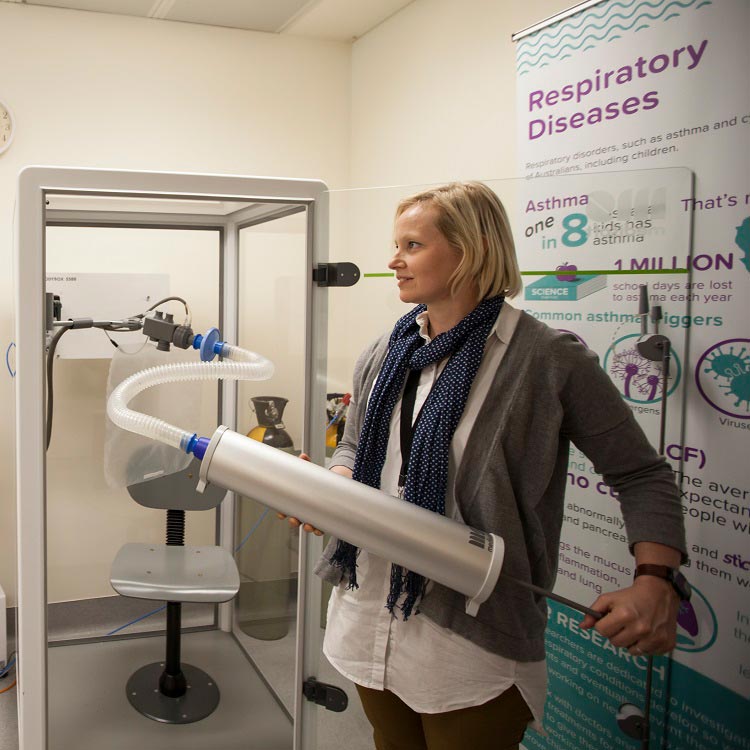Search

News & Events
Very preterm babies at risk of declining lung function throughout childhoodA The Kids Research Institute Australia study published in The Lancet Child & Adolescent Health has found that survivors of very preterm birth face declining lung function
Research
Real world effectiveness of early ensitrelvir treatment in patients with SARS-CoV-2, a retrospective case seriesEnsitrelvir, a 3C-like protease inhibitor, received emergency approval in Japan in November 2022 for treating non-hospitalized patients with mild-to-moderate COVID-19. However, confirmation of its real-world clinical effectiveness is limited.
Research
tesG expression as a potential clinical biomarker for chronic Pseudomonas aeruginosa pulmonary biofilm infectionsPseudomonas aeruginosa infections in the lungs affect millions of children and adults worldwide. To our knowledge, no clinically validated prognostic biomarkers for chronic pulmonary P. aeruginosa infections exist. Therefore, this study aims to identify potential prognostic markers for chronic P. aeruginosa biofilm lung infections.
Research
BANK CF: The Respiratory Centre BIOBANKThe Australian Respiratory Early Surveillance Team for Cystic Fibrosis (AREST CF) program has grown from an early surveillance program initiated in Perth in 1999, which performed bronchoalveolar lavage (BAL) to evaluate pulmonary infection and inflammation, as well as infant lung function testing.
Research
Multi-modality monitoring of cystic fibrosis lung disease: the role of chest computed tomographyStratification of monitoring protocols based on the risk profile of the patient can help us in the future to better care for people with Cystic Fibrosis.
Research
Transcription factor p63 regulates key genes and wound repair in human airway epithelial Basal cellsThe airway epithelium in asthma displays altered repair and incomplete barrier formation.
Research
Progression of early structural lung disease in young children with cystic fibrosis assessed using CTCross-sectional studies implicate neutrophilic inflammation and pulmonary infection as risk factors for early structural lung disease in infants and young...
Research
Suppression of adrenomedullin contributes to vascular leakage and altered epithelial repair during asthmaThe anti-inflammatory peptide, adrenomedullin (AM), and its cognate receptor are expressed in lung tissue, but its pathophysiological significance in airway...
Research
The airway epithelium is a direct source of matrix degrading enzymes in bronchiolitis obliterans syndromeLong-term survival after lung transplantation is hindered by the development of bronchiolitis obliterans syndrome (BOS).
Research
Cyanide in bronchoalveolar lavage is not diagnostic for Pseudomonas aeruginosa in children with cystic fibrosisEarly detection of the cyanobacterium Pseudomonas aeruginosa in the lungs of young children with cystic fibrosis (CF) is considered the key to delaying...
